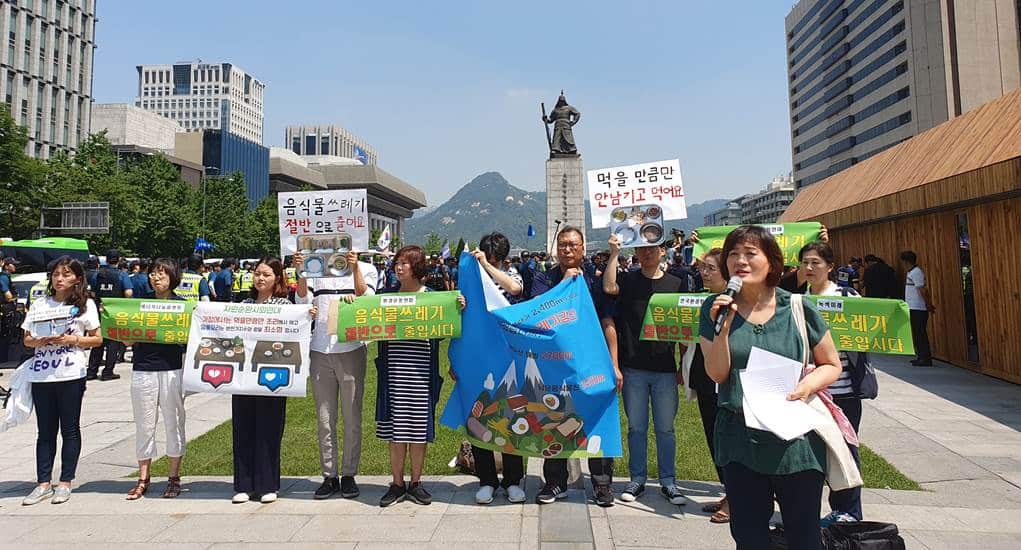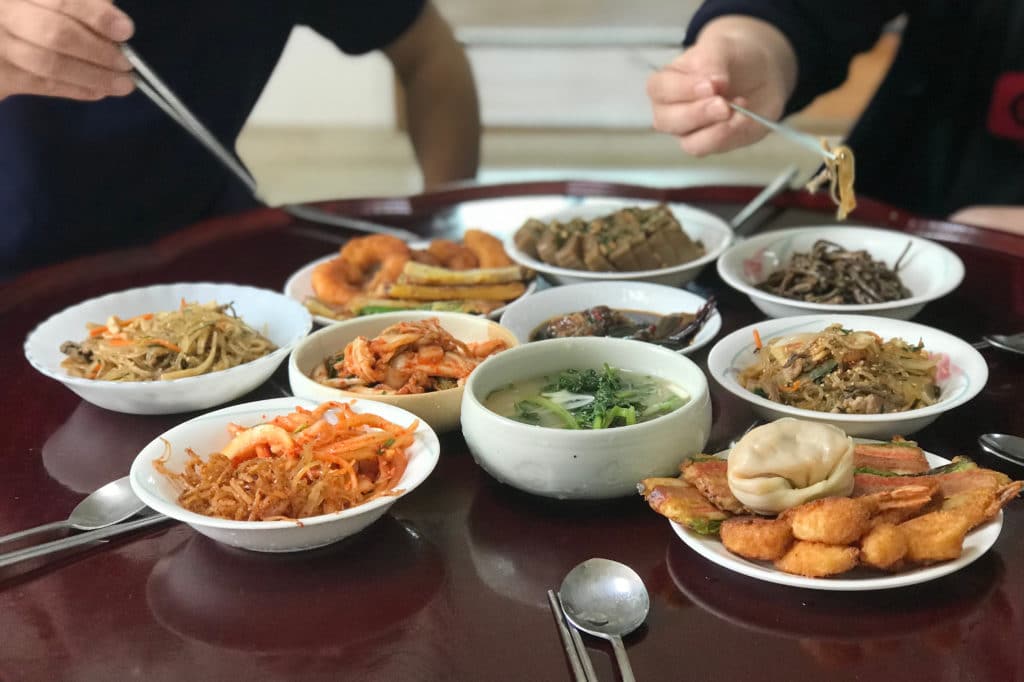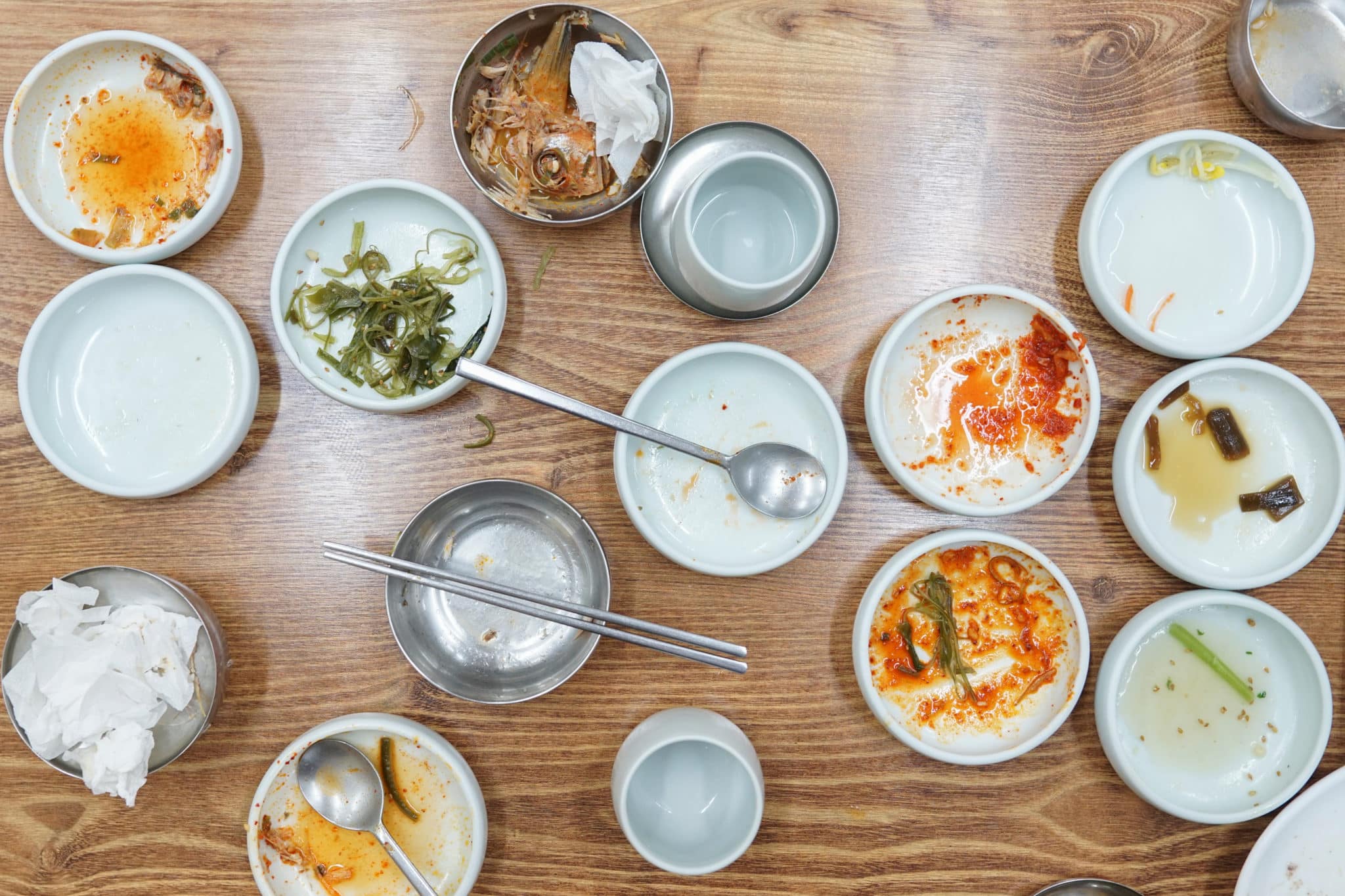In the 1990s the trash dumps at the edge of Seoul in South Korea overflowed with wasted food. The stench of rotting cabbage, fish, pickles, and pancakes grew foul in the country’s humid summers, and poor families sorted through scraps for old plastic and metal packaging to sell.
A little over two decades later, those same dump sites are practically unrecognisable.
From a paltry food waste recycling rate of just five per cent in the nineties, South Korea has transformed its approach to leftover foods, with current recycling rates of 95 per cent (and rising).
It’s a turnaround that has staked its claim firmly on the map as a world leader on how to rescue food from rubbish bins.
But how exactly did it happen?
The style of traditional South Korean dining, known as banchan, which sees families share multiple small dishes, everything from fermented cabbage (kimchi) to Korean beef BBQ (bulgogi) and dumplings (mandoo), has always left it vulnerable to chucking away plenty of leftovers.
“Although delicious, the excess and waste from these small plates meant that previously, someone in South Korea was producing about 300g of food waste per day,” says Mi-Hwa Kim, chairman of the board of the Korea Zero Waste Movement Network (KZWMN).
Prior to 1996, most of this food waste was buried at landfill sites, she explains, a strategy that became untenable as cities such as Seoul swelled during industrialisation. Those living close to dump sites suffered from the stench, while the sheer volume often led to landfills collapsing.
That’s when the likes of KZWMN and other local campaigners banded together to demand the government take action. They wouldn’t take no for an answer either, some even staging protests by lying down in the street to block garbage trucks and forcing authorities to sit down with them to work out a solution.
Their first big victory came in 2005, when it became illegal to deposit any food at a landfill. The second in 2013, when it became compulsory for households to separate out their food waste into designated biodegradable bags.
An average four-person family now pays around USD$6 a month for the bags, a small fee which nevertheless helps meet 60 per cent of the cost of running the country’s national food waste recycling scheme.

The major reason the scheme has been so effective in South Korea is thanks to the technologies that have been developed to support these mandatory recycling policies, says Kim.
“In 2013, the district Songpa first began to use automated bins that were fitted with scales and used electromagnetic fields to measure waste, charging residents fairly and accurately,” she explains.
There are as many as 6,000 of these ‘pay as you recycle’ automated bins in Seoul now, which not only encourage locals to recycle their food waste, but squeeze out liquid first to reduce the weight. Just this small tweak alone has seen the weight of food waste fall from 300g to 230g per day, adds Kim. “This excess moisture can now be converted into biogas and bio-oil at many of our nationwide treatment plants, while the proliferation of by-product fertiliser and animal feed is supporting urban farming.”
South Koreans have embraced the change, according to Sang Shin, director at global investment company Temasek, meticulously recycling household materials beyond simply food.
“Residents take recycling seriously, which is a total departure from decades ago when literally nobody cared,” he shared.
“People actually take the extra effort to remove caps from plastic bottles, and some even go as far as to remove all plastic labels.” At-home composting machines are even a mainstay of many middle-class South Korean households as a result.
These ‘smart composters,’ that often look a little like small washer-dryers, carefully control the heat and humidity of the waste to prevent any smell, compacting the organic material so it can be easily taken out to the designated recycling centres available in most apartment complexes. Residents scan an electronic ID tag, the waste is weighed automatically and they’re charged at the end of the month.

Millions of tonnes of leftover food have escaped landfill thanks to these sweeping changes to South Korea’s recycling infrastructure in the last two decades. In fact, with its 95 per cent food waste recycling rate, the country leaves the UK looking pale in comparison, where a paltry 14 per cent of household food waste is currently recycled.
So, should the UK follow its lead?
It isn’t quite that simple, points out David Rogers, head of international programmes at NGO Wrap. Yes, there could be merit in exploring such a scheme. “The move by South Korea is an interesting one and we know from the situation in the UK that when food waste collections are introduced instances of waste tend to decline, as it literally shows how much food goes to waste in your own home,” he says.
But he believes it isn’t the long-term solution to how much food is chucked away either. “While food waste recycling is good, from both a climate change and economic perspective it is far better to prevent food waste from occurring in the first place, through changes in business and citizen behaviour,” he says.
Kim wholeheartedly agrees. “Culturally, we must also begin to adapt our eating habits, recognising that a Western one-plate culinary habit versus banchan may be beneficial to our long-term efforts,” she says.
In fact, campaigners in South Korea are actively pushing for an ambitious commitment to reduce waste by a further 50 per cent. “There is much to be proud of though,” she adds.
“Over the past two decades, an infrastructure has been built that can handle 15,000 tonnes per day through 260 resource facilities, creating a breakdown of 30 per cent compost, 60 per cent fodder and 10 per cent energy. In turn, citizens have risen to the challenge by taking responsibility for, and joy in, the reduction of food waste. We have already begun in earnest, let us continue with pace.”









0 Comments